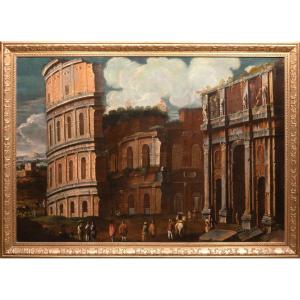Burgundy, cercle of Claus de Werve (Haarlem? - Dijon, 1439)
Early 15th century
Walnut carved in the round
H. 60 cm
The Virgin Mary stands, her right hand placed on the chest in sign of deference, her other hand holding an open book between the pages of which she has slipped her index finger; broad face with slitted eyes, full cheeks and mouth with a pouty expression; she is dressed in a dress with a simple neckline and a veil-coat, a large section of which comes back to the front, probably hanging from her belt; deep and supple folds, layered under the left arm, thick and slightly arched at the back.
This delicate virgin takes us directly back to the most radiant period of Burgundian art. Small-scale sculpture takes on a particular importance in this region in full cultural and economic turmoil. The elements or groups of altarpieces, the mourners or independent statues, the influence of Flemish art emerges in the artistic movement which develops around two great sculptors: Claus de Sluter (Haarlem, 1355 - Dijon, 1406) and his nephew Claus de Werve (Haarlem? - Dijon, 1439).
Flamboyant Gothic is reflected here in the sinuous lines and twists that the figures take while their heavy, ample drapes unfold in large rolls.
The theme of the Annunciation is the favorite subject of the private chapels of castles. The angel of the Annunciation must have matched our Virgin's collected expression. Our sculpture undoubtedly belongs to Burgundian production from the beginning of the 15th century, still strongly influenced by the great Claus Sluter, whose style was continued by his nephew Claus de Werve. Thus, the very original attitude of our Virgin, presenting the book, the reading of which she had interrupted, completely open against her right hip, is a repeat of that of mourner no. 5, part of the procession to the tomb of the Duke of Burgundy, Philippe le Bold. Claus de Werve indeed contributed to this first tomb which was built between 1384 and 1410 and completed the project following the death of his uncle. We also find the physiognomy of the faces, typical of this school, like the style of the drapes, heavy and supple, the veil-coat directly borrowed from the mourner's costume.
Related works:
- Jacques Baudoin, La sculpture flamboyante en Bourgogne et Franche-Comté, edition: Create, 1996































 Le Magazine de PROANTIC
Le Magazine de PROANTIC TRÉSORS Magazine
TRÉSORS Magazine Rivista Artiquariato
Rivista Artiquariato
